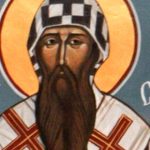By Philip Jenkins –
Every so often the Vatican announces the canonization of a new saint, an event that marks the culmination of a detailed investigation that might have lasted decades. The process involves bureaucratic hurdles, and the final decision certainly involves political considerations. If we name this saint, whom will we please, whom will we offend?
How very different and straightforward matters were in the early church! In that era, martyrs were celebrated in local cults that arose immediately and spontaneously after their deaths. Those commemorations ultimately spread far afield. That was the world of the third century.
But it was also the world of 2015. In January of that year, members of ISIL/Daesh abducted 21 poor migrant workers in Libya. All were Christians—20 Egyptian Copts and one Christian from Ghana. The captives were dressed in orange jumpsuits, intended to recall the garb of Muslim prisoners held by the US at places like Guantánamo Bay. On or around February 15, the ISIL adherents enacted one of their horrifying rituals: the prisoners were marched to a beach and then beheaded. (It was troubling to see Western media describe such atrocities as “executions,” which implies a degree of legitimacy.)
In a pathetic propaganda gesture, the movement adjusted the photos of the event to make the killers look far larger than their victims—as if they were glorious warriors fighting in God’s cause. Most of those perpetrators have presumably perished in the general collapse of the Islamic State. They have faded into well-deserved oblivion.
But those orange-clad victims are an utterly different story. As Copts watched the nightmarish videos, they observed Christians being murdered for their faith. They saw how in their last breaths each one uttered the name of Jesus, or “Lord Jesus Christ.” These were pure acts of martyrdom, just as authentically as if they had occurred under the Roman emperor Diocletian. Within a mere week of the crime, the Coptic pope and Patriarch Tawadros II registered the 21 names in the church’s Synaxarium, the official listing of commemorated martyrs, and made February 15 a holy day.
These faithful dead are now remembered with all the features that one might expect of a burgeoning cult. Multiple paintings have depicted the martyrs. The most widely circulated shows them flanked by angels and kneeling before a vision of Jesus, as crowns descend toward them. Already the images of the martyrs have acquired attributes that art historians would recognize from their study of older saints. St. Catherine, for example, is typically pictured with her wheel, St. Peter with an inverted cross. The 21 are pictured in their orange garb. Long after the era of ISIL and Guantánamo Bay will have been forgotten by all but academic historians, the faithful will still remember those orange jumpsuits as symbols of sanctity.
The murdered bodies lay unburied for months, but ultimately the remains were collected and flown to Egypt, where monasteries and churches rang bells to mark the occasion. Or as that event must now be phrased: their relics were translated to a new church sanctuary especially built for them, at al-Aour in the Egyptian province of Minya, which has one of the highest proportions of Coptic believers anywhere in that country. In coming years, many churches will be dedicated to the 21, not only in Egypt but in the many Coptic communities spread across the United States and throughout the world. There are already paintings, murals, and icons, and more will appear. Assuredly, too, miracles will be attributed to the martyrs. Their fame is secure.
While more detailed martyrologies will appear in future, a wonderful account of the story has already appeared in Martin Mosebach’s richly rewarding book The 21: A Journey into the Land of Coptic Martyrs (Plough, 2019). In a strikingly brief space, Mosebach has much to tell us about each of the martyrs as individuals and about their families. The 21 is also deeply informative about the state of Coptic Egypt, and about martyrdom, and even about Coptic liturgy. The book’s only flaw is that it is so emotionally moving that it is difficult to read without frequent breaks.
When the ISIL killers first publicized their act in 2015, they declared that they were “chopping off the heads that had been carrying the cross delusion for a long time.” As a move to suppress the “cross delusion,” the killings failed spectacularly. In fact, we might recall one of the great political speeches of the last century, when Pádraig Pearse recalled all the violence that Great Britain had used to suppress the spirit of Ireland, and we might adapt his words today: “They think that they have foreseen everything, think that they have provided against everything; but the fools, the fools, the fools!—they have left us our faithful dead!”
_______________
https://www.christiancentury.org/article/notes-global-church/christian-martyrs-orange-jumpsuits
Philip Jenkins teaches at Baylor University. He is the author of The Great and Holy War and The Many Faces of Christ.




